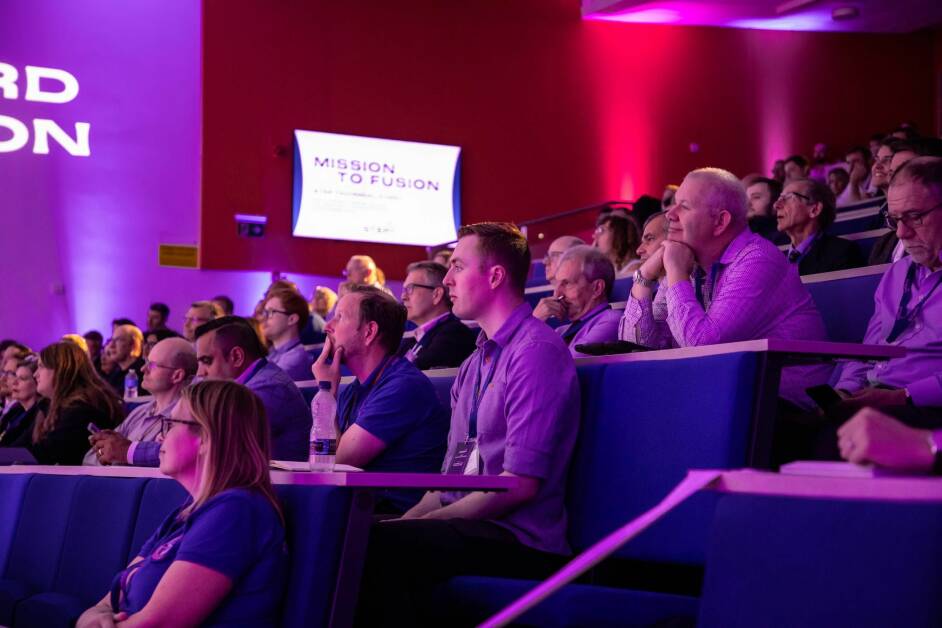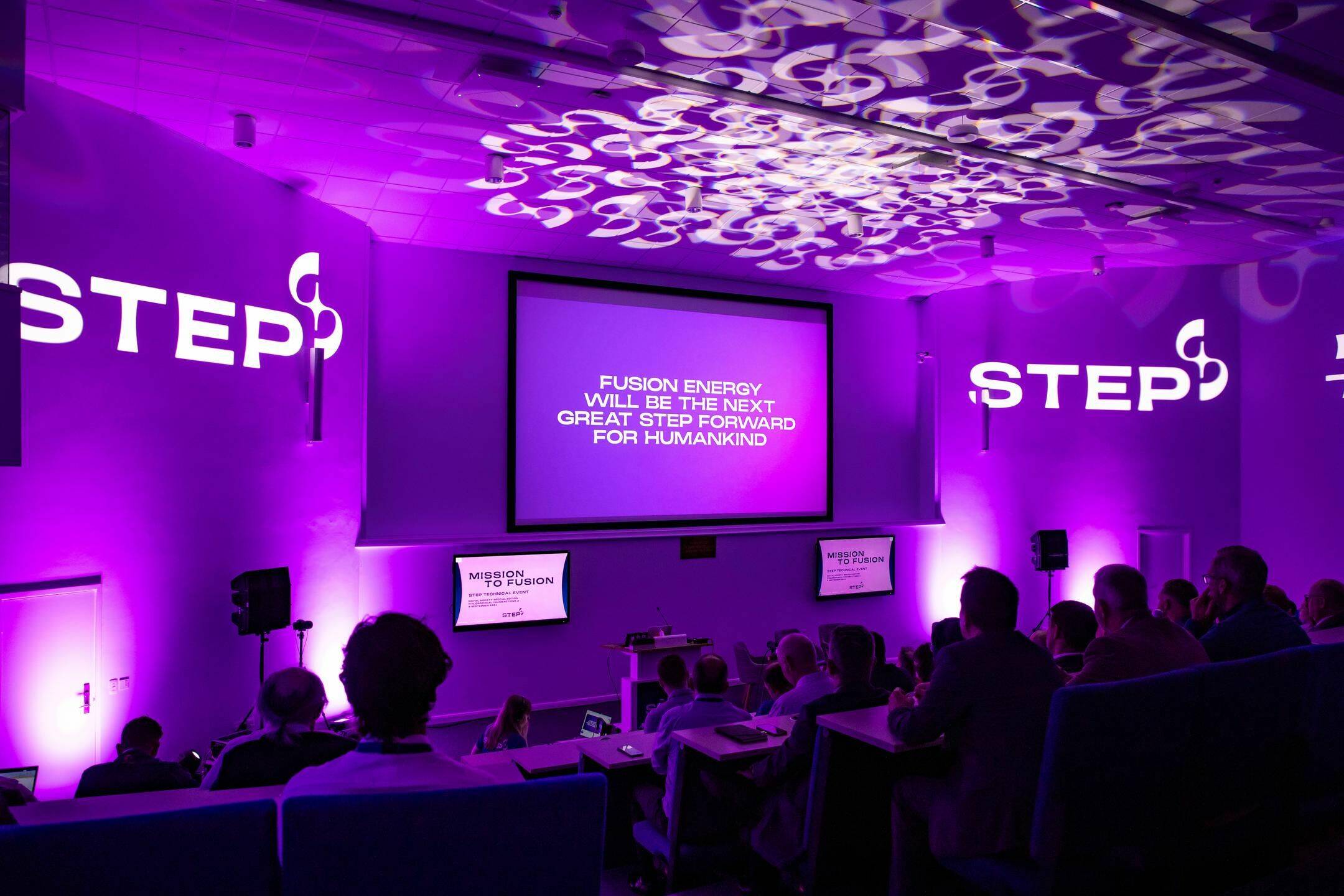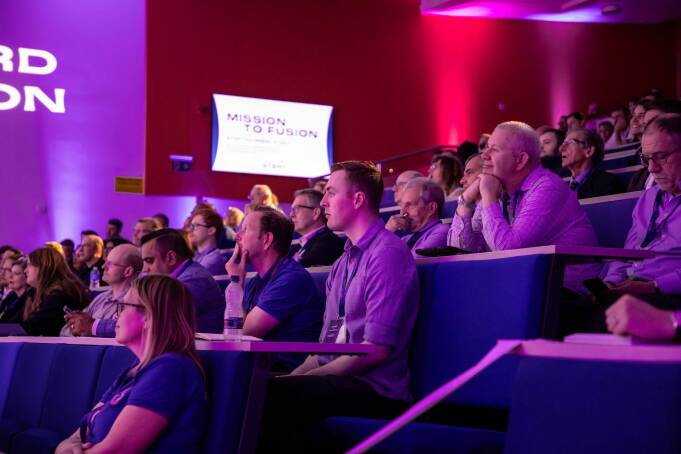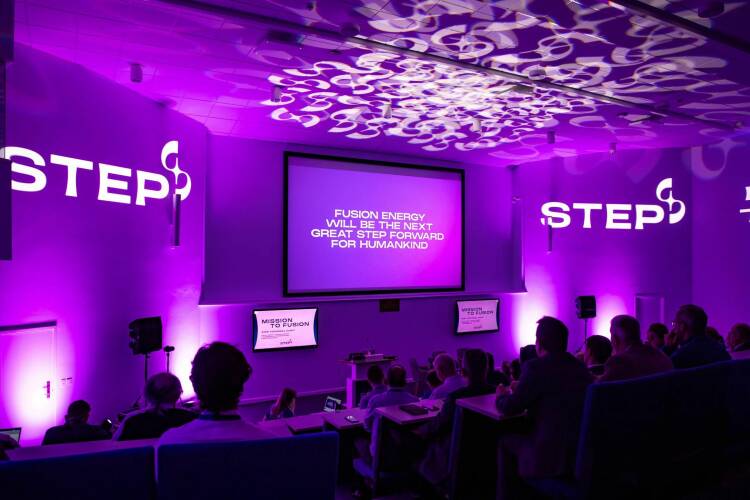
Royal Society publishes peer-reviewed papers demonstrating technical progress to deliver STEP, the UK’s first prototype fusion energy powerplant.
A tokamak approach was chosen as it is the most advanced way of making fusion happen. A spherical tokamak is more compact than traditional tokamaks, aiming to minimise cost while maximising energy output, potentially making it easier to scale.
STEP will be built at the former coal-fired power station site of West Burton, Nottinghamshire, where characterisation works surveying ground and environment are well underway. First operations are expected in the early 2040s.
Paul Methven, CEO, UK Industrial Fusion Solutions, a subsidiary of UKAEA Group that will be responsible for the delivery of STEP, said:
The digital version of the themed Royal Society edition of Philosophical Transactions A, titled: “The Spherical Tokamak for Energy Production (STEP): Pioneering Fusion Powerplant Design,” is now live and accessible from Royal Society Publishing. The print edition will be published in October 2024.
See below for the STEP event programme and follow updates @STEPtoFusion on X, Facebook, LinkedIn and YouTube or sign-up for STEP alerts at www.step.ukaea.uk.
“STEP is a UK-led national endeavour, for the world. It’s about unlocking the potential of cutting-edge science and technology that could revolutionise humanity’s future and, for the UK, secure a leading position in a new strategic technology. We don’t yet have all the answers, but we are a trailblazer in fusion powerplant design, built on a solid foundation of decades of innovative and world-leading fusion research at the United Kingdom Atomic Energy Authority (UKAEA).
“This Royal Society publication is a snapshot in time – the design will continue to evolve as we identify new challenges, learn and develop – and already the team has an impressive ability to find a way through the toughest problems.”
One key area that makes STEP different to other fusion programmes is the formation of an integrated delivery organisation based on a public-private partnership model that will deliver the prototype plant. This includes designing for cost, and at pace.
Additionally, the STEP programme is currently in the process of selecting potential major industry partners, one in engineering and one in construction, to work alongside STEP’s fusion partner, UKAEA.
The 15 peer-reviewed papers in the STEP edition of Philosophical Transactions A cover themes from design, plasma, maintenance, magnets and re-mountable joints to net energy, breeding and fuel self-sufficiency.
The UK is leading the way in fusion energy powerplant design, as published in a recent special Royal Society edition. The edition details the technical progress of STEP, a pioneering programme to design and build the UK’s first prototype fusion plant.
This is the first time a complete snapshot of the design has been captured for publication, outlining the technologies required for a first-of-a-kind prototype and how they will be integrated into a powerplant to produce electricity from fusion.
STEP (‘Spherical Tokamak for Energy Production’) aims to pave the way for the commercial viability of fusion by demonstrating net energy, fuel self-sufficiency and a viable route to plant maintenance. By doing so, it stimulates the development of a new industry, positioning the UK at the forefront commercially.
The programme is taking a holistic approach to delivering a fully operational prototype plant that also considers decommissioning as part of the design.

The UK is leading the way in fusion energy powerplant design, as published in a recent special Royal Society edition. The edition details the technical progress of STEP, a pioneering programme to design and build the UK’s first prototype fusion plant.
This is the first time a complete snapshot of the design has been captured for publication, outlining the technologies required for a first-of-a-kind prototype and how they will be integrated into a powerplant to produce electricity from fusion.
STEP (‘Spherical Tokamak for Energy Production’) aims to pave the way for the commercial viability of fusion by demonstrating net energy, fuel self-sufficiency and a viable route to plant maintenance. By doing so, it stimulates the development of a new industry, positioning the UK at the forefront commercially.
The programme is taking a holistic approach to delivering a fully operational prototype plant that also considers decommissioning as part of the design.
The digital version of the themed Royal Society edition of Philosophical Transactions A, titled: “The Spherical Tokamak for Energy Production (STEP): Pioneering Fusion Powerplant Design,” is now live and accessible from Royal Society Publishing. The print edition will be published in October 2024.
See below for the STEP event programme and follow updates @STEPtoFusion on X, Facebook, LinkedIn and YouTube or sign-up for STEP alerts at www.step.ukaea.uk.
“STEP is a UK-led national endeavour, for the world. It’s about unlocking the potential of cutting-edge science and technology that could revolutionise humanity’s future and, for the UK, secure a leading position in a new strategic technology. We don’t yet have all the answers, but we are a trailblazer in fusion powerplant design, built on a solid foundation of decades of innovative and world-leading fusion research at the United Kingdom Atomic Energy Authority (UKAEA).
“This Royal Society publication is a snapshot in time – the design will continue to evolve as we identify new challenges, learn and develop – and already the team has an impressive ability to find a way through the toughest problems.”
One key area that makes STEP different to other fusion programmes is the formation of an integrated delivery organisation based on a public-private partnership model that will deliver the prototype plant. This includes designing for cost, and at pace.
Additionally, the STEP programme is currently in the process of selecting potential major industry partners, one in engineering and one in construction, to work alongside STEP’s fusion partner, UKAEA.
The 15 peer-reviewed papers in the STEP edition of Philosophical Transactions A cover themes from design, plasma, maintenance, magnets and re-mountable joints to net energy, breeding and fuel self-sufficiency.

A tokamak approach was chosen as it is the most advanced way of making fusion happen. A spherical tokamak is more compact than traditional tokamaks, aiming to minimise cost while maximising energy output, potentially making it easier to scale.
STEP will be built at the former coal-fired power station site of West Burton, Nottinghamshire, where characterisation works surveying ground and environment are well underway. First operations are expected in the early 2040s.
Paul Methven, CEO, UK Industrial Fusion Solutions, a subsidiary of UKAEA Group that will be responsible for the delivery of STEP, said:
Royal Society publishes peer-reviewed papers demonstrating technical progress to deliver STEP, the UK’s first prototype fusion energy powerplant.
